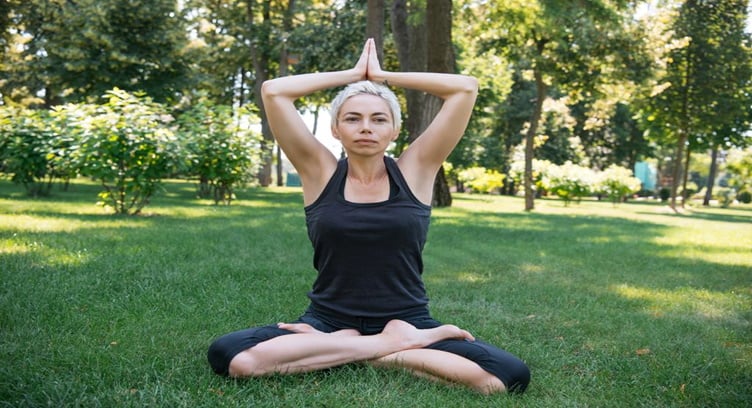Flying yoga, also known as aerial yoga or anti-gravity yoga, is a type of physical exercise that was developed by Christopher Harrison in 2006. It combines traditional yoga postures with moves inspired by Pilates, dance, and acrobatics. The exercises are performed using a suspended hammock-like device to help support the body while performing postures that can be both challenging and therapeutic. This type of yoga provides an opportunity to explore movement safely while having fun at the same time!
Benefits of Flying Yoga:
Flying Yoga, or aerial yoga, is one of the newest forms of yoga gaining popularity around the world. It combines traditional yoga poses with trapeze-style postures and hammock swings for a unique and fun workout. Flying Yoga offers both mental and physical benefits that make it an attractive option for those looking to add something different to their fitness routine.
For those looking for a mental workout without all the stress associated with traditional exercise regimens, Flying Yoga can also provide psychological benefits that are beneficial both on and off the mat. This type of yoga encourages relaxation by allowing practitioners time away from their worries while suspended in midair; providing them with a unique sense of freedom and lightness.
Overview of Flying Yoga Techniques:
Yoga has been practiced for centuries, offering practitioners a variety of physical, mental, and spiritual benefits. Flying yoga is a relatively new form of yoga that combines traditional postures with aerial acrobatics while suspended in the air. This unique practice is gaining popularity as individuals seek to take their yoga practice to the next level.
The most common type of flying yoga involves using fabric hammocks or swings that are suspended from the ceiling or otherwise mounted securely. The individual climbing into the hammock wraps themselves in it before performing various poses and postures as if they are floating in mid-air. This type of flying yoga allows for a greater range of motion than some traditional postures, challenging practitioners’ balance, strength, and flexibility while providing relief from gravity’s pull on their joints and muscles.
Tips for Improving with Flying Yoga
Flying yoga, also known as aerial yoga or AntiGravity yoga, is quickly becoming a popular practice for yogis of all levels. This type of yoga combines traditional poses with aerial hammocks to challenge the body and mind uniquely. If you’re new to flying yoga, here are some tips for improving your practice:
Start Slow: Flying yoga can be intimidating at first. Remember that it’s okay to take things slowly and build up your strength and confidence gradually. Focus on mastering the basic poses before attempting more complicated poses with the hammock.
Have Fun: Don’t take yourself too seriously when practicing flying yoga! Have fun with it by experimenting with different positions and movements in the hammock – you might surprise yourself with what you can do!
Strengthen Your Core: A strong core is essential for success in flying yoga since you need to rely on your core muscles for support while suspended in the air. Make sure to include exercises that target your core, such as plank pose and boat pose, in your regular yoga routine.
Use the Hammock for Support: The hammock can be a useful tool for support during challenging poses. For example, using the hammock to support your hips during pigeon pose can help you maintain the pose for longer and with less discomfort.
Try Different Classes: There are many different styles of flying yoga classes available, so don’t be afraid to try different ones to find the style that suits you best. Some classes may focus more on strength and conditioning, while others may focus more on relaxation and meditation.
Listen to Your Body: As with any form of exercise, it’s important to listen to your body and not push yourself too hard. If a pose feels uncomfortable or painful, back off and try a modification or a different pose instead. Remember that your safety and well-being should always come first.

Conclusion
Flying yoga, or aerial yoga, is a unique and challenging form of yoga that offers both physical and mental benefits. By using a soft fabric hammock to support the body, practitioners can explore new movements and postures that can be difficult to achieve through traditional yoga practice. The use of gravity as an aid rather than a hindrance can also help those with mobility issues or injuries to participate in a yoga practice that might otherwise be too difficult.
For those willing to take on the challenge, flying yoga can be a fun and rewarding way to enhance their yoga practice and improve their physical and mental well-being. By incorporating tips such as starting slow, having fun, and strengthening their core and back muscles, practitioners can gradually improve their skills and achieve greater levels of flexibility, balance, and strength.

